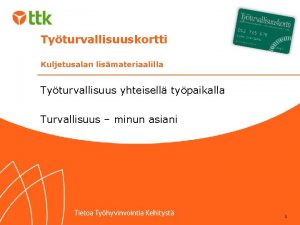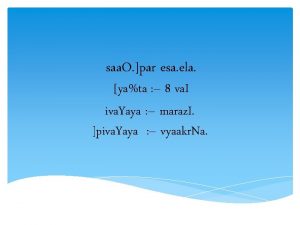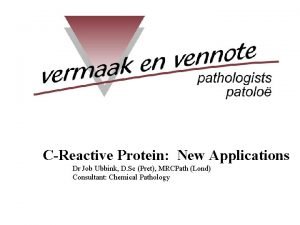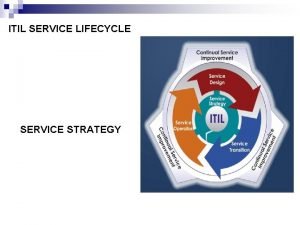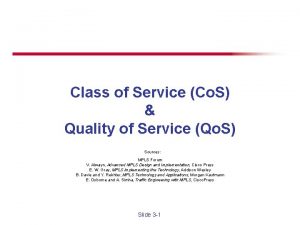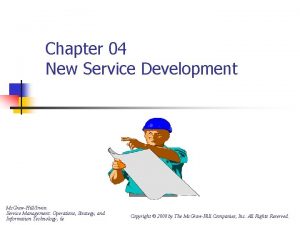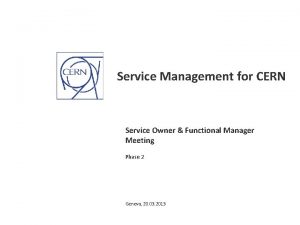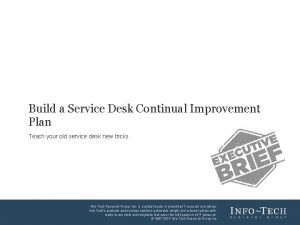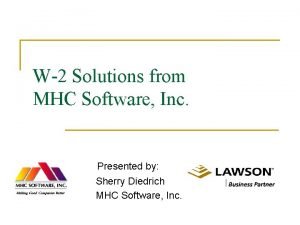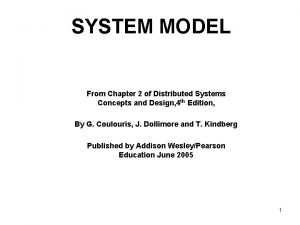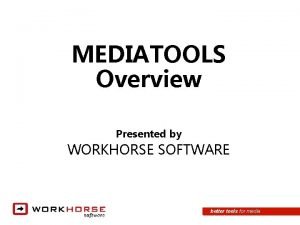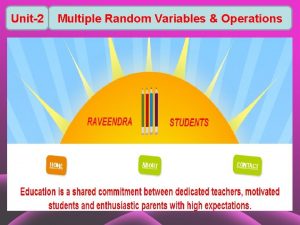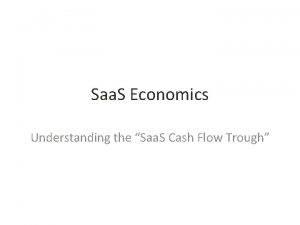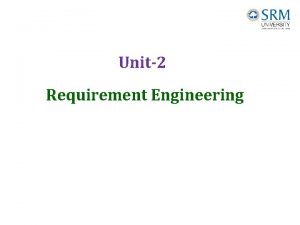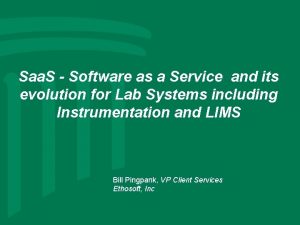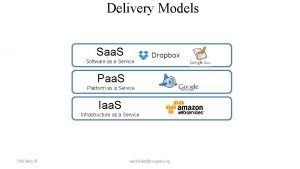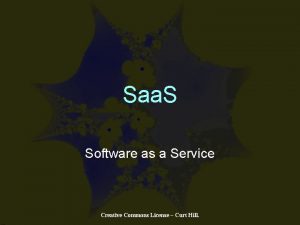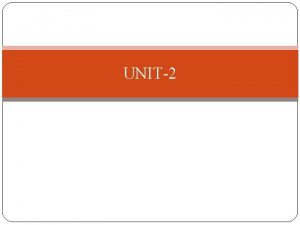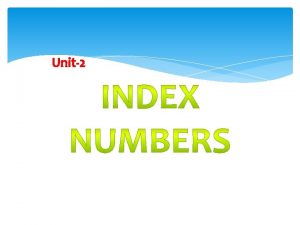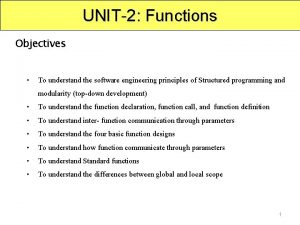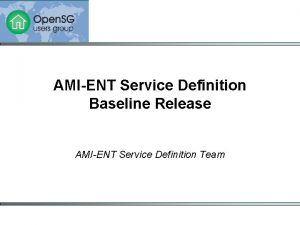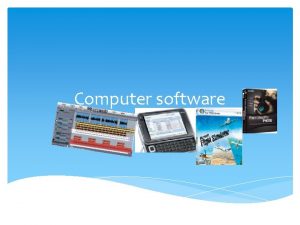Unit2 Saa S Definition Software as a Service






























- Slides: 30

Unit-2


Saa. S Definition • Software as a Service (Saa. S) is defined as software that is deployed over the internet. • With Saa. S, a provider licenses an application to customers either as a service on demand through a subscription, in a “pay-as-you-go” model, or (increasingly) at no charge when there is opportunity to generate revenue from streams other than the user, such as from advertisement or user list sales.

Benefits • No additional hardware costs • No initial setup costs • Usage is scalable • Updates are automated • Cross device compatibility • Accessible from any location • Applications can be customized and white-labeled

Saa. S

Saa. S

• Paa. S: Platform as a Service The most complex of the three, cloud platform services or “Platform as a Service” (Paa. S) deliver computational resources through a platform. • Paa. S makes the development, testing, and deployment of applications quick, simple, and cost-effective, eliminating the need to buy the underlying layers of hardware and software. • One comparison between Saa. S vs. Paa. S has to do with what aspects must be managed by users, rather than providers: With Paa. S, vendors still manage runtime, middleware, O/S, virtualization, servers, storage, and networking, but users manage applications and data.

Paa. S Features • Operating system • Server-side scripting environment • Database management system • Server Software • Support • Storage • Network access • Tools for design and development • Hosting

Paas Benefits • • • They don’t have to invest in physical infrastructure Makes development possible for ‘non-experts Flexibility Adaptability Teams in various locations can work together Security

Paas Architecture Model

Google App Engine

Microsoft Azure

SQL Azure

Iaa. S

Amazon EC 2

Dbaas • Database as a Service (DBaa. S) is a cloud-based approach to the storage and management of structured data. DBaa. S delivers database functionality similar to what is found in relational database management systems (RDBMSes) such as SQl Server, My. SQL and Oracle. • Being cloud-based, DBaa. S provides a flexible, scalable, ondemand platform that's oriented toward self-service and easy management, particularly in terms of provisioning a business' own environment


Challenges of Dbaas

Communication as a Service (Caa. S)

Map Reduce Framework Map (k 1, v 1) list (k 2, v 2) Reduce (k 2, list(v 2)) list (v 2)


Map. Reduce Applications • • Distributed grep Count of URL-access frequency <URL, total-count> Term vector per host <word, frequency> Reverse Web-link graph <target, Source> : < host, term-vector> Statistical algorithms • Support Vector Machines(SVM) • Linear Regression(LR) • Naive Bayes(NB) • Neural Network(NN) Analysis & Aggregation phases


Hadoop Architecture Description • It is an open source software development project. It is a project hosted by the Apache Software Foundation. Hadoop is software focused on reliable, scalable, distributed computing. • Hadoop is a parallel processing system implemented as a Map. Reduce engine layered on top of a fault-resilient distributed file system.

The basic functionalities of Hadoop Distributed File System (HDFS) • Large files are split into blocks of equal size • These blocks are distributed across the cluster for storage • Because node failure is a reality to be considered in a larger cluster, each block is stored multiple times (typically three times) on different computers


• Prepare the Map() input – the “Map. Reduce system” designates Map processors, assigns the K 1 input key value each processor would work on, and provides that processor with all the input data associated with that key value. • Run the user-provided Map() code – Map() is run exactly once for each K 1 key value, generating output organized by key values K 2. • “Shuffle” the Map output to the Reduce processors – the Map. Reduce system designates Reduce processors, assigns the K 2 key value each processor would work on, and provides that processor with all the Map-generated data associated with that key value. • Run the user-provided Reduce() code – Reduce() is run exactly once for each K 2 key value produced by the Map step. • Produce the final output – the Map. Reduce system collects all the Reduce output, and sorts it by K 2 to produce the final outcome.

Hadoop Architecture


 Työturvallisuus kuljetusala
Työturvallisuus kuljetusala Mitä kappaleiden välinen vuorovaikutus saa aikaan
Mitä kappaleiden välinen vuorovaikutus saa aikaan Triangle congruence theorems
Triangle congruence theorems Ambiguous triangle case
Ambiguous triangle case Mit saa
Mit saa Suullani ylistän jeesustani
Suullani ylistän jeesustani Toastmasters treasurer role
Toastmasters treasurer role Druva insync ad fs integration
Druva insync ad fs integration Web application architecture example
Web application architecture example Fusionappsoer
Fusionappsoer Saa
Saa Toastmasters' saa duties
Toastmasters' saa duties Ela saa
Ela saa Saa
Saa A journey to hope saa
A journey to hope saa Aig life insurance nedbank
Aig life insurance nedbank Itil service transition definition
Itil service transition definition What is the purpose of the service strategy lifecycle stage
What is the purpose of the service strategy lifecycle stage Continual service improvement 7 steps
Continual service improvement 7 steps Factors that influence desired service expectations
Factors that influence desired service expectations Service provider and service consumer
Service provider and service consumer Class of service vs quality of service
Class of service vs quality of service New service concept design
New service concept design Service owner vs service manager
Service owner vs service manager Service improvement plan for service desk
Service improvement plan for service desk Adp self help
Adp self help Mhc-software-inc
Mhc-software-inc Lascad failure
Lascad failure John meyer pittsburgh pa
John meyer pittsburgh pa Software and hardware service layers in distributed systems
Software and hardware service layers in distributed systems Media tools software
Media tools software
